Have you recently set up a fish tank and want to make it visually appealing for both yourself and your aquatic pets? Decorating a fish tank not only enhances its aesthetic appeal, but also provides a more natural and stimulating environment for your fish.
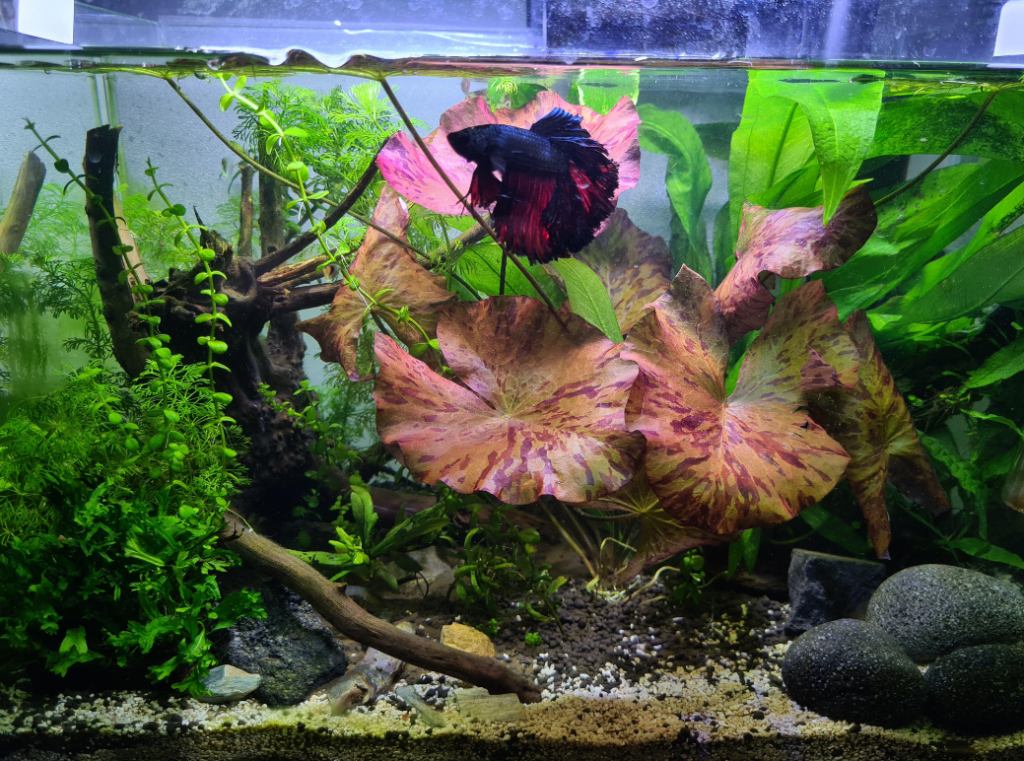
With a wide range of options available, including live or fake plants, rocks, and ornaments, you can create a captivating underwater world that your fish will love.
In this article, we’ll explore the different types of decorations you can put in your fish tank and provide some valuable tips to ensure a safe and visually appealing setup.
Understanding the Importance of Decorations in a Fish Tank
Decorations play a crucial role in a fish tank as they replicate the natural habitats of fish in the wild.
Providing a stimulating environment not only makes your fish feel more at home, but it can also help reduce stress and promote their overall wellbeing.
Additionally, decorations can create hiding spots for shy fish and serve as focal points that make your tank visually appealing.
Factors to Consider Before Choosing Decorations
Before selecting decorations for your fish tank, it’s important to consider a few factors to ensure compatibility and maintain a healthy environment for your fish.
We also highly recommend Setting Up a Biotope Aquarium: Replicating Natural Habitats
Compatibility with Fish Species
Different fish species have varying preferences and requirements when it comes to decorations.
Some fish, like tetras and guppies, enjoy swimming through plants and ornaments, while others, such as cichlids, prefer more open spaces.
Research the specific needs of your fish species to choose the most suitable decorations.
Tank Size and Layout
The size of your tank will determine the amount and size of decorations you can incorporate.
Overcrowding the tank with decorations can restrict swimming space and lead to poor water circulation.
Consider the dimensions of your tank and plan the layout accordingly, ensuring ample room for your fish to swim freely.
Water Parameters and Maintenance
Some decorations, such as certain rocks or wood, can affect the water chemistry in your tank.
Check with knowledgeable staff or do thorough research to ensure that any materials you use are safe for your particular fish species and do not alter the water parameters.
Additionally, consider the ease of cleaning and maintaining the decorations to keep your tank pristine.

Creative Themes for Fish Tank Decoration
Choosing a theme for your aquarium decoration can transform your fish tank into an intriguing underwater world.
Popular themes include a sunken pirate ship, complete with treasure chests and faux antiquities, which can be complemented by dramatic lighting from your heater or lighting fixture to enhance the mysterious underwater effect.
For those with territorial fish, consider themes that naturally incorporate plenty of hiding spaces, like rocky caves or dense artificial plant forests, which provide necessary refuge and help maintain peace within the tank.
Always ensure that any aquarium decorations used are free of sharp edges and are securely anchored to prevent accidental tipping.
Purchasing items from a reputable pet shop guarantees that your decorations are designed specifically for aquatic use, ensuring the safety and happiness of your fish.
Incorporate aquarium decor and aquarium ornaments that complement each other, creating a harmonious and safe environment for your fish.

Natural Decorations for Fish Tanks
Adding natural elements to your fish tank can create a more realistic and aesthetically pleasing environment. Here are some popular options for natural decorations:
Live Aquatic Plants
Live aquatic plants not only add a vibrant touch to your fish tank but also provide various benefits. They oxygenate the water, absorb harmful chemicals, and create hiding spots for fish. Some popular choices include java fern, Amazon sword, and anubias.
Driftwood and Rock Structures
Driftwood and rocks can be used to create natural-looking structures in your fish tank. They offer hiding spots and create territories for fish.
Make sure to choose driftwood that has been properly prepared and rocks that are aquarium-safe to avoid any negative effects on your fish and water chemistry.
Coral and Seashells
If you have a saltwater aquarium, incorporating pieces of coral and seashells can add a touch of the ocean to your tank. However, it’s important to source these items responsibly and avoid purchasing or collecting coral from endangered reefs.

Artificial Decorations for Fish Tanks
If live plants require too much maintenance or you prefer a more customizable setup, artificial decorations can be a great alternative. Here are some popular choices:
Plastic Plants and Ornaments
Plastic plants and ornaments come in an array of shapes, sizes, and colors to suit any preference. They offer low maintenance and can withstand nibbling from certain fish species. Ensure that the materials used are non-toxic and won’t harm your fish.
Ceramic and Resin Structures
Ceramic and resin structures, such as castles, ships, and treasure chests, add a playful and visually appealing element to your fish tank. These decorations are durable and easy to clean, making them a popular choice for many aquarium enthusiasts.
Colorful Gravel and Substrates
Colored gravel and substrates provide a visually pleasing base for your fish tank. They come in various sizes and colors, allowing you to create unique and vibrant underwater landscapes. Ensure that the gravel or substrate you choose is suitable for your fish species and won’t alter the water chemistry.
Confused about liquid versus pellet coral foods? Let’s explore your best options here.

Creating a Balanced and Functional Decorative Setup
When decorating your fish tank, strive for a balanced and functional setup that not only looks visually appealing but also provides your fish with a comfortable environment. Consider the following tips:
Focal Points and Centerpieces
Create focal points by placing visually striking decorations in prominent locations within your tank. This could be a large ornament, a group of plants, or an eye-catching structure. Focal points help draw attention and create a visually interesting setup.
Hiding Spots and Caves
Incorporate decorations that create hiding spots and caves for your fish. Many fish species appreciate having places to retreat and feel secure. Rocks, driftwood, or specially designed tunnels can provide these hiding spots.
Variations in Height and Texture
Add depth and dimension to your tank by using decorations of different heights and textures. Taller plants and structures can create vertical interest, while varying textures provide a more natural and visually appealing environment. Consider using a combination of plants, rocks, and ornaments to achieve these variations.

DIY Fish Tank Decoration Ideas
Creating your own aquarium decorations for your fish tank can be a rewarding and creative process, allowing you to tailor the environment to your fish’s preferences while ensuring everything is fish safe.
Start with selecting safe materials free from toxic heavy metals; reputable pet shops often offer ceramic ornaments and aquarium-safe paints that can be used to personalize pieces.
Consider building custom hideaways using aquarium substrate or creating a unique backdrop with artificial plants, both of which add natural aesthetics without risking the health of your fish.
It’s also important to spend time carefully maintaining these aquarium decorations, as neglect can lead to the accumulation of harmful substances. Use a gravel cleaner regularly to keep your DIY decorations pristine and safe for your aquatic friends.
Safety Considerations for Fish Tank Decorations
When choosing decorations for your fish tank, always prioritize the safety of your fish. Here are some safety considerations:
Non-toxic Materials
Ensure that any decorations you use are made from non-toxic materials that will not leach harmful substances into the water or harm your fish. Read product labels and do thorough research before purchasing any decorations.
Secure Placement and Stability
Securely anchor or position decorations to prevent them from falling or toppling over, which could potentially harm your fish or damage the aquarium. Larger decorations may require additional support or special mounting techniques.
Easy to Clean and Maintain
Choose decorations that are easy to clean and maintain to ensure a healthy and hygienic environment for your fish. Avoid decorations with intricate or hard-to-reach areas that can harbor debris or promote the growth of harmful bacteria.

Maintaining and Cleaning Decorations
Regular maintenance and cleaning of your fish tank decorations are essential to ensure the health and longevity of your setup. Here are some tips:
Regular Inspections and Maintenance
Regularly inspect your decorations for any signs of damage, algae growth, or deterioration. Remove any damaged or dirty decorations and replace them if necessary. Perform routine maintenance, such as water changes and filter cleanings, to maintain optimal water quality.
Algae and Debris Removal Techniques
To keep your decorations looking clean and free of algae, periodically scrub them with a soft brush or sponge. You can also use algae scrapers or magnetic cleaners specifically designed for aquarium use. If necessary, remove the decorations and soak them in a cleaning solution to remove stubborn algae or stains.
Proper Cleaning and Disinfection Methods
If you need to thoroughly clean or disinfect your decorations, ensure you use aquarium-safe cleaning products and follow the instructions carefully. Rinse the decorations thoroughly after cleaning to remove any residue before placing them back into the tank.

Conclusion
Decorating your fish tank is an exciting and creative endeavor that can greatly enhance the beauty and appeal of your aquatic environment.
By carefully selecting and arranging decorations, you can create a visually stunning and functional setup that mimics the natural habitats of your fish.
Whether you choose live plants, rocks, or artificial ornaments, always prioritize the safety and comfort of your fish.
Regular maintenance and cleaning will ensure that your decorations remain in excellent condition and your fish can thrive in their visually captivating underwater world.



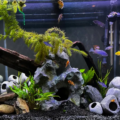
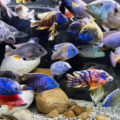
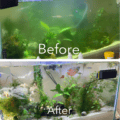


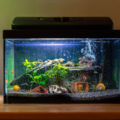
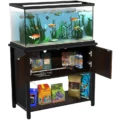

1 thought on “What Can I Put In My Fish Tank For Decoration?”